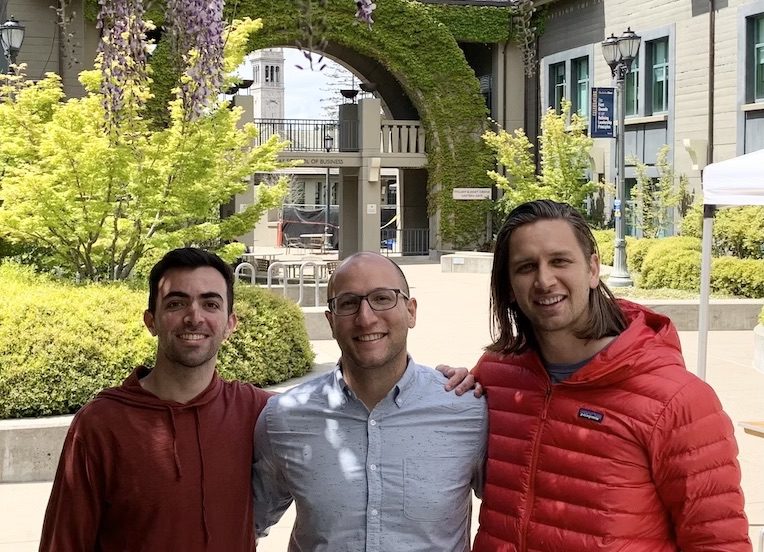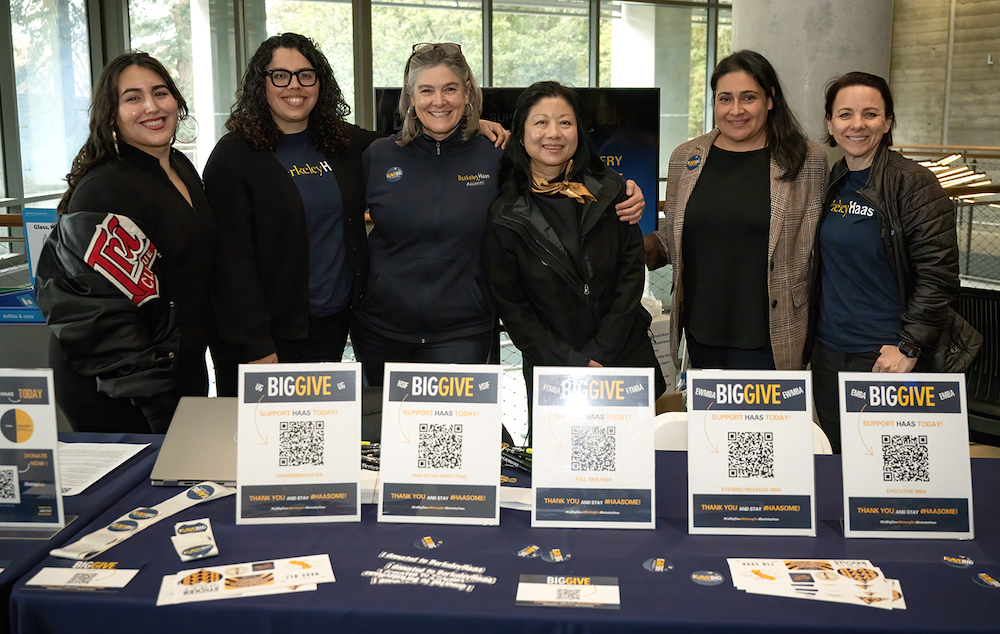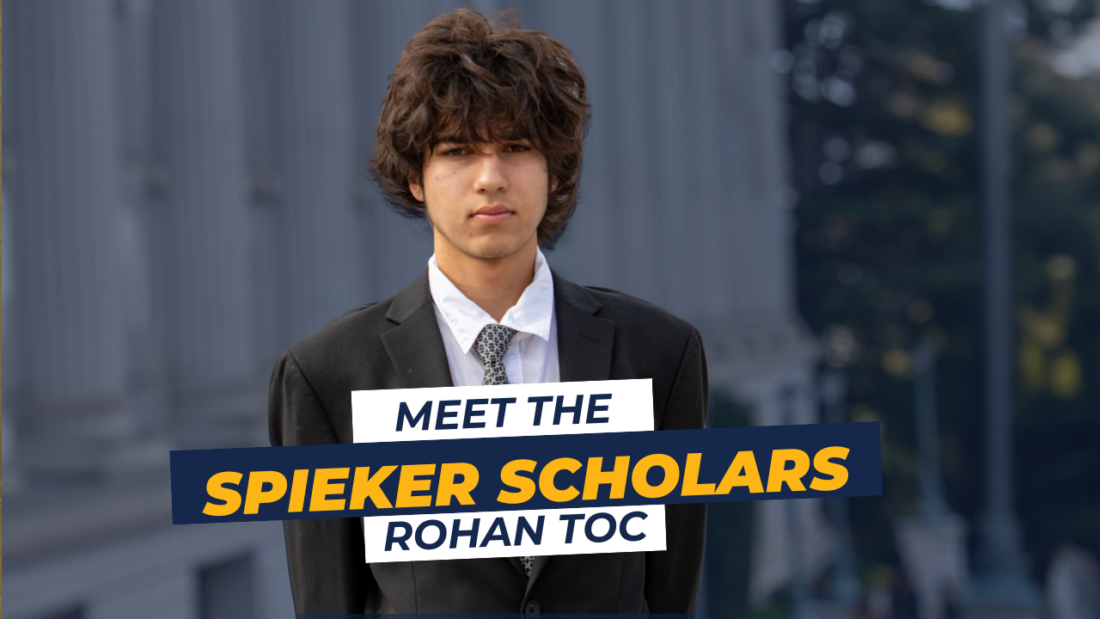Meet the Spieker Scholars: Claudia Lizeth Carrillo

A group of Berkeley Haas MBA students helped build the business plan for an attic-retrofit system based around heat sensing drones and foam-spraying spider robots that took the top prize in the U.S. Department of Energy’s (DOE) 2022 American-Made E-ROBOT competition.
Alexander Sergian, Joseph Aharon, John Aquino, all MBA/MEng 22, built the business plan for team RoboAttic/Thermadrone, along with Zixuan Chen, EWMBA 23, and Vincent Chang, MBA 22. The robotics project was led by Dr. Avideh Zakhor.
Dr. Zakhor led the team of about 35 people, including UC Berkeley students, professionals, and consultants, who developed the RoboAttic/Thermadrone technology. The three top winners in the multi-stage competition were announced April 7 by the DOE’s Office of Energy Efficiency and Renewable Energy (EERE). (Watch the robot in action in the video below)
Homes lose up to 20% of their heat and air conditioning due to poorly insulated roofs. Yet just 1% of building floorspace in the U.S. undergoes a meaningful retrofit each year due to the high cost and invasive nature of construction and renovation, according to Ram Narayanamurthy, a Program Manager in the Department of Energy’s Building Technologies Office.
Thermadrone’s software uses thermal drone camera images to diagnose and identify opportunities for attic insulation retrofits. Once attics in need of insulation are identified, Roboattic robots clean, air seal, and apply spray foam insulation to the building envelope. This enables construction workers to retrofit previously inaccessible attics with a PS4 controller. Finally, Thermadrone software provides quality assurance by measuring and verifying the retrofit was done properly.
An earlier round of the E-ROBOT Competition challenged participants to design and build robot prototypes that could be used to retrofit buildings to improve energy efficiency. For the second and final phase of the competition, 10 finalists were tasked with building viable business models for their respective startups.
Sergian, Aharon, and Aquino worked on the business plan for RoboAttic/Thermadrone for both the competition and as their capstone project, a required component of the MBA/MEng Program.
Their work included estimating the total market size, sales, marketing, channel partners, and go-to-market strategy. “As MBA/MEng students, we were brought on as folks who were not only technical enough to understand the technology, but also strategic enough to put together a compelling business vision,” Aharon said. “It’s an example of the sort of cross-disciplinary collaboration that we constantly see around UC Berkeley.”
To be successful, the team had to prove the energy consumption and cost reduction benefits as well as worker safety potential.
To be successful, the team had to prove the energy consumption and cost reduction benefits as well as worker safety potential.
“We were presented with an exciting technology,” said Sergian. “It was our challenge to figure out how to commercialize the product and make it a market success.”

The students said they applied lessons from their MBA coursework in research and development and finance to the project. They calculated a total market size for building envelope retrofits in the US at about $1.25 billion, estimating that contractors would be willing to invest about $10,000 per robot. The value of the robot is that it can access places in attics that are hazardous and foul for construction workers to crawl through, Aharon said.
Chen, who also worked on the project while in the evening & weekend MBA program, helped with marketing research, identifying potential user groups and conducting interviews with facility managers, utility companies, and government agencies.
“In the business plan stage, I worked with Avideh to identify critical cost components and revenue sources,” she said. She also developed profit and loss statements, cost performance models, and a manufacturing and scalability analysis.
The other competition winners included a semi-autonomous flying quadcopter air duct inspection drone and a robotic retrofit tool used for caulking, aerosol sealing, and foam insulating buildings.
Posted in:



